Files with a DAT extension are typically generic data files that store information specific to the applications they refer to. Most of them are normally text files but many of them do not have an obvious program that opens them. To open a .dat file in Excel it should contain text or tabular data otherwise it cannot be opened in Excel.
In this tutorial, we will look at two methods that we can use to open a .dat file in Excel.
Method 1: Use the Excel Text Import Wizard
We use the following steps:
- Open Excel.
- Click on File.
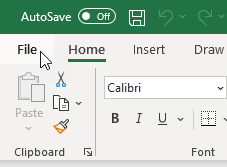
- Click Open on the sidebar.

- Select Browse.
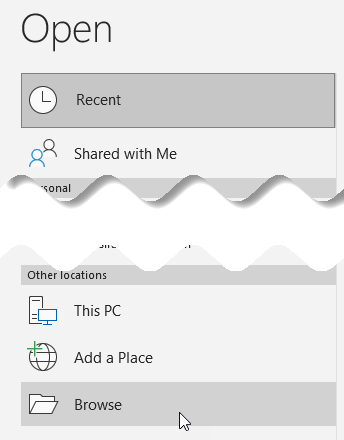
- In the Open dialog box select All Files in the drop-down list next to the File name drop-down list.
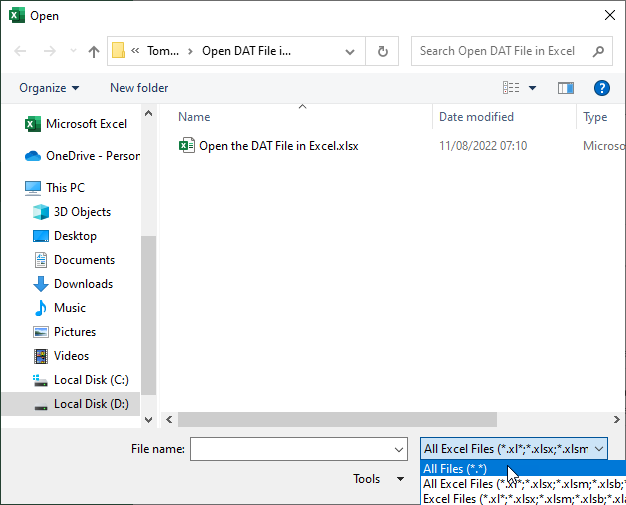
- Select the .dat file that you want to open and click Open.
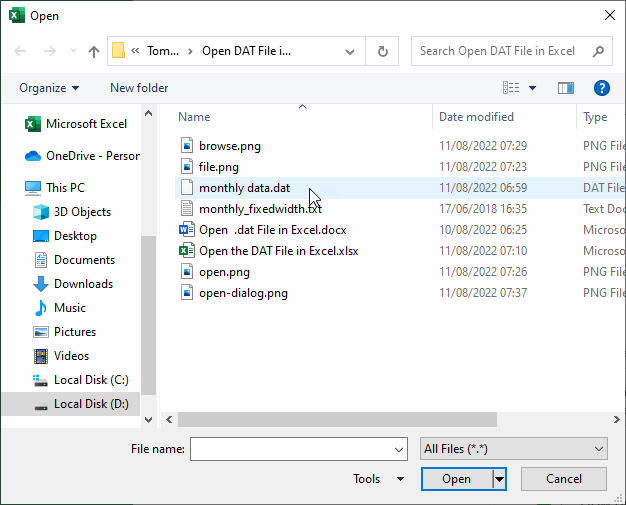
- In step 1 of the Text Import Wizard dialog box look at the preview of the file at the bottom. Choose appropriate settings that best describe the data. In this case, we choose Fixed width because the fields in the data are aligned in columns with spaces between each field. The file has no headers; therefore, we click Next, leaving the My data has headers checkbox unchecked.
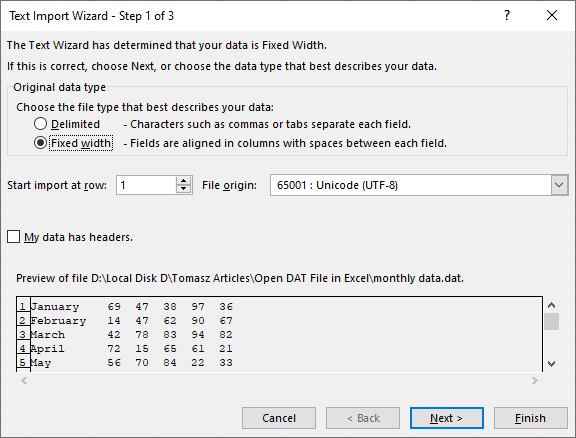
Note: If your dataset has a header and its fields are separated by commas, then you need to select Delimited as file type and check the My data has headers checkbox.
- In step 2 of the Text Import Wizard, Set the field widths as necessary and click Next.
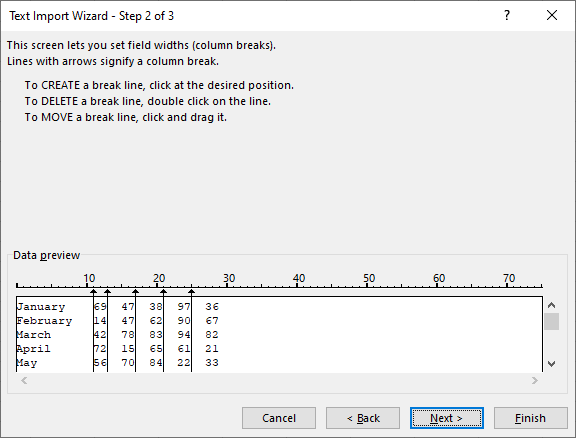
- In step 3 of the Text Import Wizard, if necessary, select each column, set the appropriate data format, and click Finish.

The .dat file is opened in Excel and appears as below:
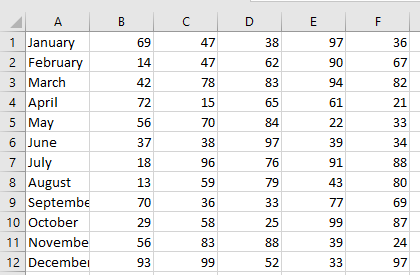
Method 2: Copy and paste data from a text file and split it into columns
Most .dat files are text files. We can open the .dat files in a text editor such as Notepad, copy the data from the Notepad into an Excel worksheet, and split it into columns.
We use the following steps:
- Right-click the .dat file and select Open with from the shortcut menu.
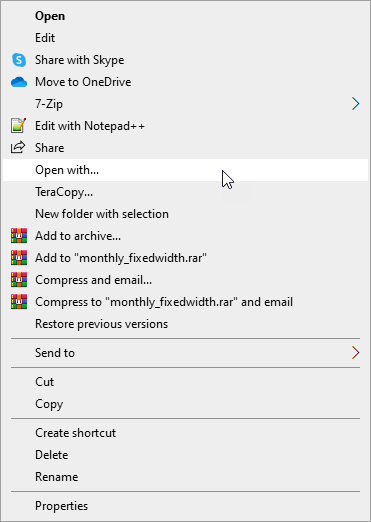
- Select Notepad from the dialog box that pops up and click OK.
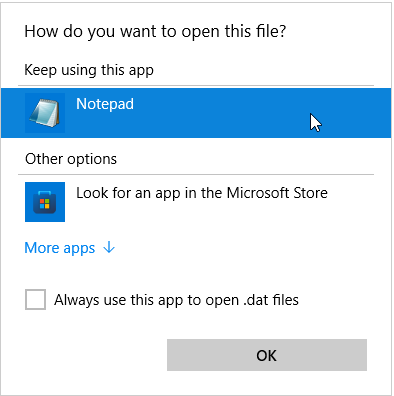
The .dat file is opened in Notepad.
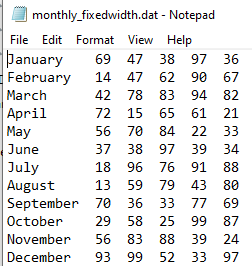
- Select the data in Notepad and press Ctrl + C to copy it to the Windows clipboard.
- Open an Excel worksheet and select cell A1. Press Ctrl + V to paste the data we copied from Notepad.
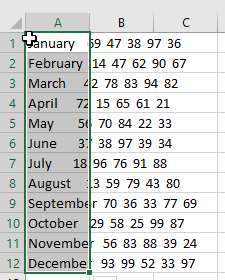
All the data is pasted into one column. We must split it into different columns.
- With the pasted data still selected, click Data >> Data Tools >> Text to Columns:
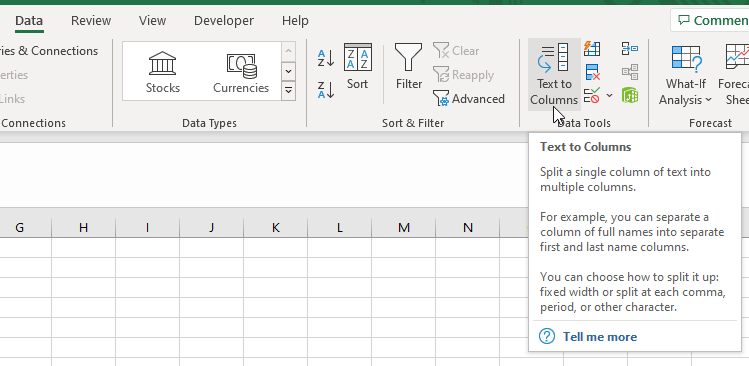
- In step 1 of the Convert Text to Columns Wizard choose the file type that best describes your data. In this case, we choose Fixed width because the fields of the data are aligned in columns with spaces between each field. Click Next.
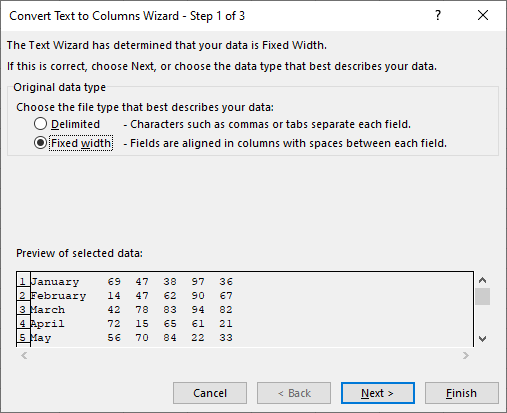
- In step 2 of the Convert Text to Columns Wizard, adjust the width of the columns as necessary then click Next.
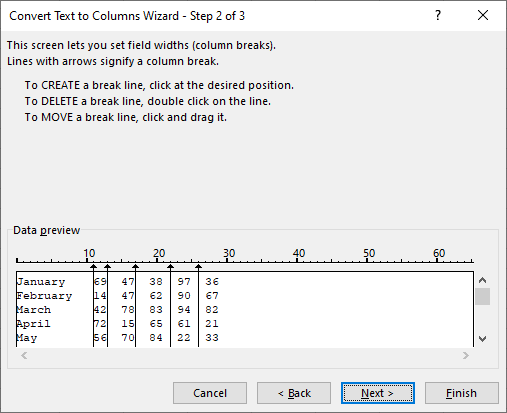
- In step 3 of the Convert Text to Columns Wizard, select the columns for which we want to set the Data Format.

- Select the first column, set the data format to text by choosing the Text format, and click Finish.
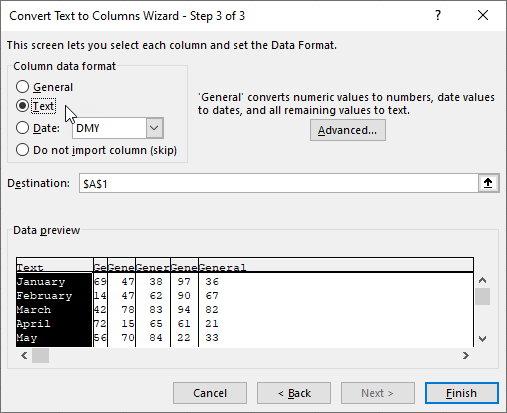
The data is split into different columns.
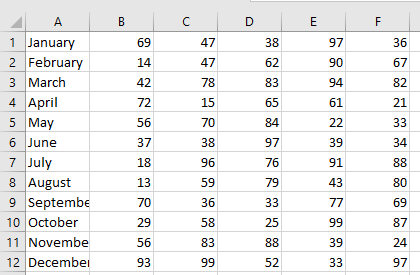
Conclusion
Files that have a DAT extension are typically generic data files that store information specific to the applications they refer to. Most of them are normally text files. To open a .dat file in Excel, it should have text or data in a tabular form otherwise it cannot be opened in Excel.
In this tutorial, we looked at two methods that we can use to open .dat files in Excel: using the Excel Open dialog box and Text Import Wizard and importing the data via a text editor such as Notepad.
